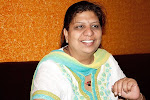Sometime back myself and Ajay had a chat ... and how can acronyms confuse one is a classy example here !! These sections are highlighted in blue.
Ajay: Hi Meeta,
me: hi
Ajay: you prefer twitter or gmail chat or nothing (considering the time)
me: btw i hv been planning to sleep since 10 pm but been consistently on
Ajay: That's the power of ET discussions I would say
me: u bet
Ajay: why do you think managers need details of a process? They are afraid that they do not know what the tester is doing?
me: nah ! they do not know what they or their team is doing. They do not have competency in most of the cases to understand what is rightly done and what is not hence the approach
Ajay: "a document which has been passed on by seniors and told that this would work in most cases" something like that?why is there a gap b/w good tester and a good manager?
me: kind of low self confidence is another reason, bad technical skills is yet another. There is never a gap between a good tester and a good manager
Ajay: is it true that testers with bad tech skills are promoted to management faster than good testers?
me: gap will be there only between a good tester and a bad manager
Ajay: If you can't be replaced, you can't be promoted stuff
me: nah !promotion in product companies is due to your skills. Mostly promotion in service industry is due to your buttering skills
Ajay: good to know why is your smiley not animated?on google talk or Gmail?
Ajay: How come iPhone testing?
me: no idea, why it does not get animated ...test it out
Ajay: so I asked: are you on Gmail or Google talk?
me: iphone- generally has been interesting me for sometime
Ajay: which browser and which version ok
me: IE7gmail
Ajay: ok let me try to simulate it
Ajay: Check from IE 6
me: cant revert using office laptop
Ajay: no no don't
me: sab band ho jaayega if i change any settings
Ajay: XP, Vista?
me: n i'll hv to spend whole of tomm with my ccd guy XP
Ajay: you have chrome installed?
me: not allowed
Ajay: could you please try once with chrome oh ok
oh ok ccd? why ccd? no office?
me: they'll immediately block my official mbox if i download n install any thing directly. ccd is our customer connection division. They take care of our hardware
Ajay: ROFL
me: whats that now ?
Ajay: Cafe Coffee Day
me: mujhe laga tha
Ajay: Rolling on Floor Laughing
me: tum yahi soch rahe hoge isiliye acronyms se door rehne ko kehte hain what is AFD btw ? Ajay: once in my Engineering interview, the external guide asked me do you know ATM- Away from Desk?I said Yes and was kind of shocked that he would give his ATM card and password and ask me to withdraw money
me: ok, gives me a new topic for blog
Ajay: and then realized that he was talking about Adobe Type Manager



